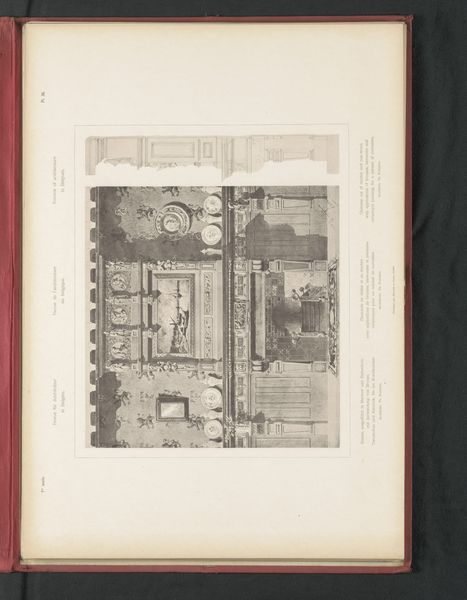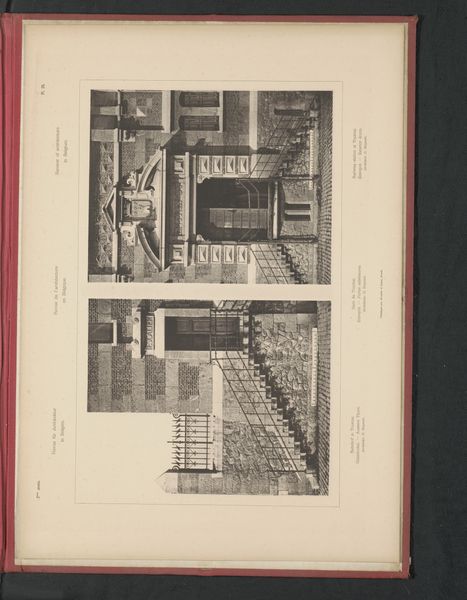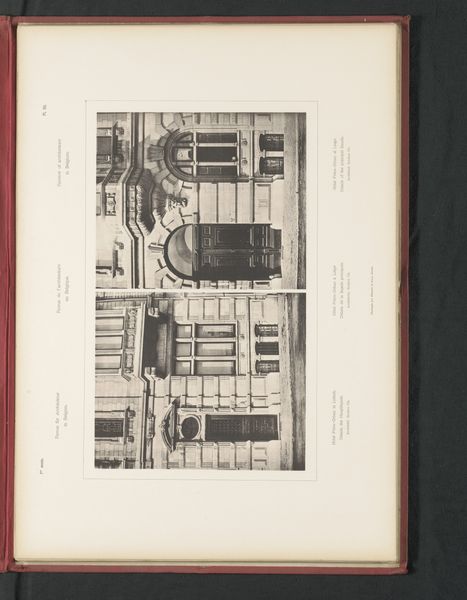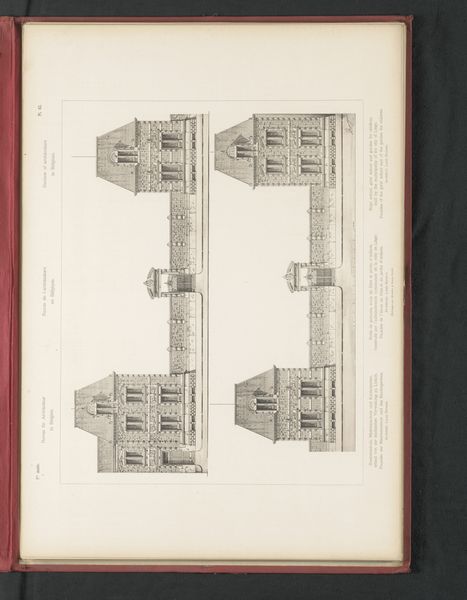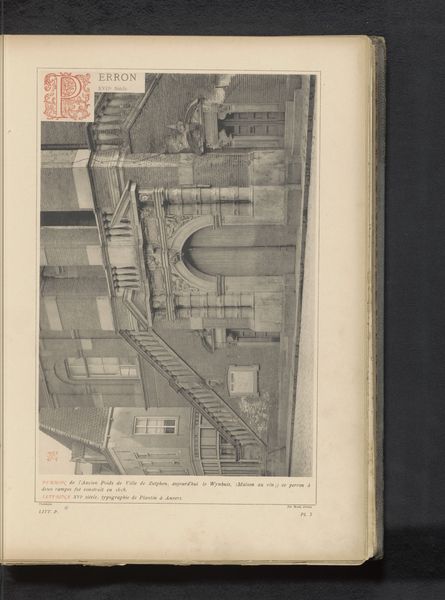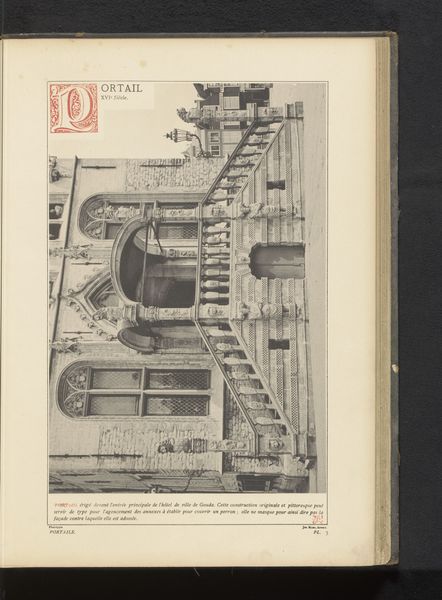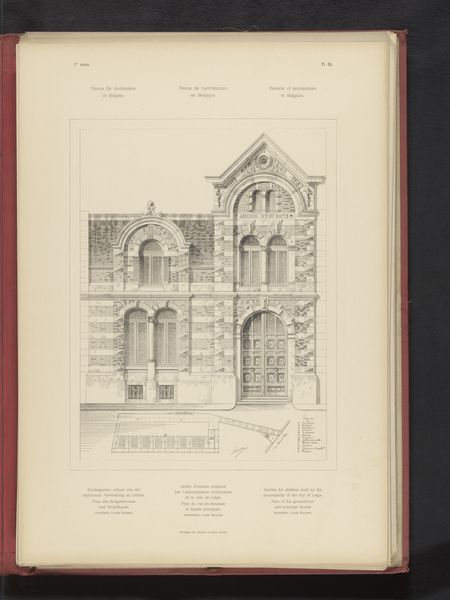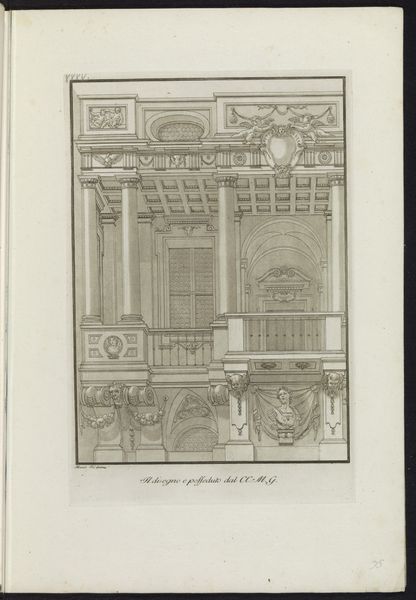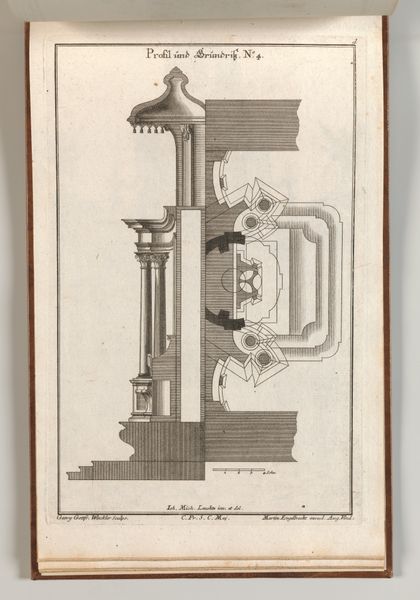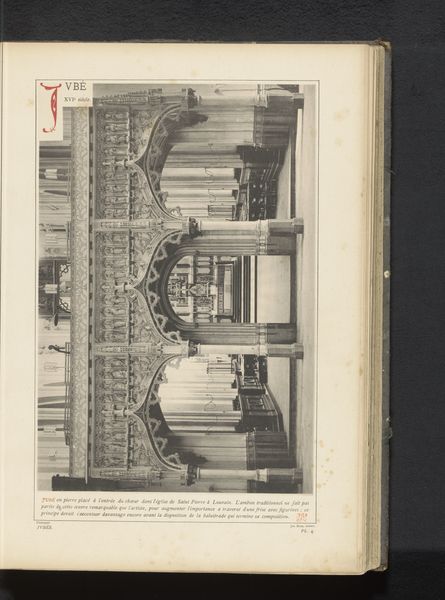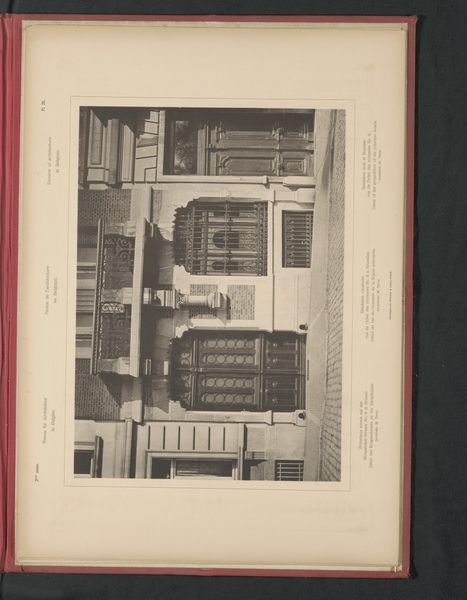
Reproductie van een ontwerp van details van pakhuis Steenackers in Antwerpen, door Jean-Jacques Winders before 1893
0:00
0:00
drawing, print, etching, paper
#
drawing
#
neoclassicism
# print
#
etching
#
paper
Dimensions: height 377 mm, width 245 mm
Copyright: Rijks Museum: Open Domain
Curator: Before us we have a print—specifically, an etching on paper—entitled "Reproductie van een ontwerp van details van pakhuis Steenackers in Antwerpen," which translates to "Reproduction of a design of details of the Steenackers warehouse in Antwerp," attributed to Jean-Jacques Winders and dating from before 1893. Editor: It’s astonishingly detailed! The precision of line creates a very stark, almost severe mood, despite the subject matter seemingly about decoration. It feels like looking at a technical drawing rather than something purely aesthetic. Curator: That severity perhaps speaks to the time. Antwerp at the close of the 19th century was a major port city, deeply enmeshed in colonial trade networks. These details, rendered in such a meticulous style, served to project an image of reliability and strength, literally and figuratively building a visual representation of capitalist power. Editor: Interesting, I see that now. And look at how the ornamentation itself – the cornices, the sculpted figures – derives heavily from Neoclassical forms, echoing the architectural vocabulary of empires. There's an orderliness, a deliberate control evident in every line, every flourish. Curator: Exactly. Even the choice to reproduce this design as a print speaks to its intended audience, it was made for dissemination amongst architects, planners, investors— all parties complicit in the systems from which these warehouses profited. This wasn't art for art's sake; it was a tool of architectural branding. Editor: And it works, even today. I feel impressed by the precision and permanence of it all. Perhaps a touch uneasy now, understanding the weight of the socio-political framework, yet it is undoubtedly powerful work when viewed as the elevation of commerce into a type of monumental, artistic form. Curator: Precisely. Reflecting on the artwork now I am reminded of how integral artistic representations are in projecting and cementing complex historical structures of power. Editor: Yes, I find that I will keep considering this interaction between architectural aesthetics and economic drive long after we walk away from this artwork.
Comments
No comments
Be the first to comment and join the conversation on the ultimate creative platform.
